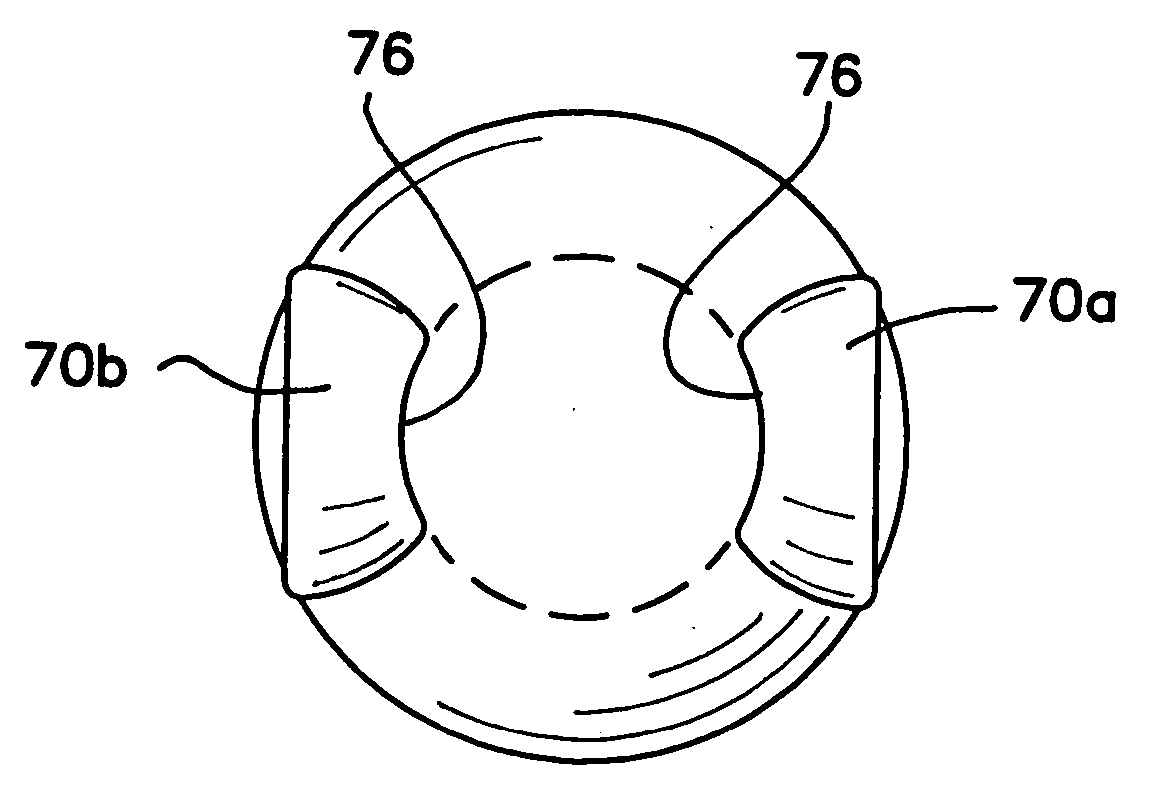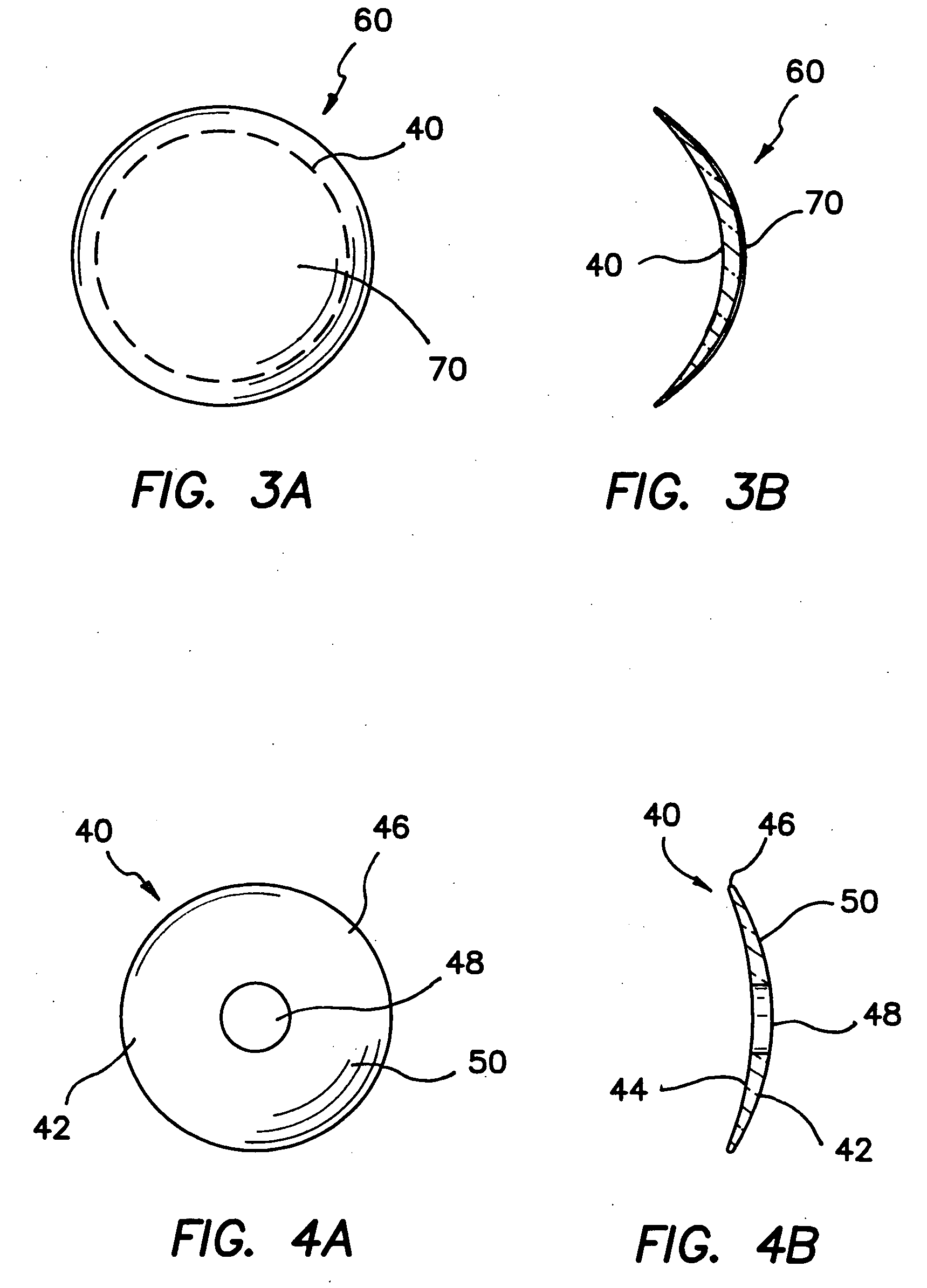Devices and methods for improving vision
a technology of eye vision and devices, applied in the field of eye vision improvement, can solve the problems of poor corneal onlay coverage, many materials from which existing corneal onlays are manufactured, and insufficient coverage of the onlay with the epithelium, so as to improve the vision of a patient, or correct the
- Summary
- Abstract
- Description
- Claims
- Application Information
AI Technical Summary
Benefits of technology
Problems solved by technology
Method used
Image
Examples
Embodiment Construction
[0059] As illustrated in FIG. 1, a typical human eye 10 has a lens 12 and an iris 14. Posterior chamber 16 is located posterior to iris 14 and anterior chamber 18 is located anterior to iris 14. Eye 10 has a cornea 20 that consists of five layers, as discussed herein. One of the layers, corneal epithelium 22, lines the anterior exterior surface of cornea 20. Corneal epithelium 22 is a stratified squamous epithelium that extends laterally to the limbus 32. At limbus 32, corneal epithelium 22 becomes thicker and less regular to define the conjunctiva 34.
[0060]FIG. 2 illustrates a magnified view of the five layers of cornea 20. Typically, cornea 20 comprises corneal epithelium 22, Bowman's membrane 24, stroma 26, Descemet's membrane 28, and endothelium 30. Corneal epithelium 22 usually is about 5-6 cell layers thick (approximately 50 micrometers thick), and generally regenerates when the cornea is injured. Corneal epithelium 22 provides a relatively smooth refractive surface and helps...
PUM
 Login to View More
Login to View More Abstract
Description
Claims
Application Information
 Login to View More
Login to View More - R&D
- Intellectual Property
- Life Sciences
- Materials
- Tech Scout
- Unparalleled Data Quality
- Higher Quality Content
- 60% Fewer Hallucinations
Browse by: Latest US Patents, China's latest patents, Technical Efficacy Thesaurus, Application Domain, Technology Topic, Popular Technical Reports.
© 2025 PatSnap. All rights reserved.Legal|Privacy policy|Modern Slavery Act Transparency Statement|Sitemap|About US| Contact US: help@patsnap.com



